Transitioning from being an employee to being self-employed is a goal of many American workers, and a growing number of workers have realized their goal in the wake of pandemic-related economic disruptions.
Individuals often cite taking control of their career as a top motivating factor for being self-employed. Self-employment frequently starts as a side hustle that blossoms into a full-time career. Without even knowing it, however, the self-employed may find themselves operating a sole proprietorship.
Whether a sole proprietorship is the final destination on a self-employed individual’s entrepreneurial journey or a stop on the way to running a larger business, they should understand the pros and cons of this structure.

The Shift to Self-Employment
Having a full-time job was once seen as the main path to a successful career. But that perception has changed radically among younger workers, who have learned the hard way that employment does not offer the security it once did.
The Great Recession saw roughly one in five employees lose their jobs. It pushed many of them into temporary work, often as contractors; disrupted traditional career paths; and contributed to an overall sense that the economic system is broken.
While the economy stabilized in the years after the Great Recession, COVID-19 delivered another blow as millions of businesses laid off staff. The number of self-employed workers rose sharply following pandemic-related shutdowns and layoffs.
However, unlike with the Great Recession, the newly self-employed after the pandemic were not just employees who had been laid off from their jobs. Forced to reconsider their work lives during the COVID-19 lockdowns, many workers joined the Great Resignation, willingly leaving their jobs to become self-employed.
Self-employment remains above pre-pandemic levels and, if it continues increasing at its current rate, could surpass traditional employment in the coming years. Self-employed Americans comprise roughly 6 percent to 15 percent of the workforce, depending on the source. However, many more Americans want to be self-employed. A 2021 survey conducted by Freshbooks found that 40 percent of traditionally employed Americans were contemplating a shift to self-employment, with half saying it is their top life goal. Among those who are self-employed, 95 percent said they plan to stay that way for the foreseeable future, the study also found.
It is not just low-skilled workers, such as rideshare and delivery drivers, that are swelling the self-employed ranks. According to an Upwork survey, highly educated and skilled workers make up a growing share of those providing freelance services.
Self-Employment and Sole Proprietorship
Workers who are not employed by a specific company may, by default, be operating a sole proprietorship. Unlike a corporation, limited liability company (LLC), or partnership, which require paperwork to be filed with the state and the payment of filing fees, a sole proprietorship typically requires no such formalities. In fact, a contractor, freelancer, or other self-employed individual is automatically considered a sole proprietor by the Internal Revenue Service (IRS) if they operate a business under their own name and are not registered as another business type.
Sole proprietors may need to obtain industry-specific licenses and permits to lawfully operate. They can also file an application to conduct business under a fictitious name, called a doing business as (DBA) name. With a DBA, a sole proprietorship entity is not separate from the individual who runs it: legally, they are considered the same.
While fictitious name certificates do not provide any significant legal protections, they can help business owners conduct business within a certain geographical space under a specified name. This should not be confused with trademark protections that provide certain levels of exclusivity when it comes to brand identifiers such as names and logos.
Benefits of a Sole Proprietorship
The simplicity of a sole proprietorship is one of its major advantages. Other than paying taxes, there are typically no required filings or registrations. Startup costs are low, and even tax preparation is relatively simple, since the sole proprietorship is not taxed separately from the business owner.
- The business’s profits and losses are reported on the business owner’s personal income tax return, which uses the owner’s Social Security number.
- In addition, sole proprietors can take advantage of tax deductions not available to employees, such as health insurance deductions and business expenses.
With the simplicity of a sole proprietorship comes greater control over the business. Although some states permit a married couple to jointly own a sole proprietorship, there are no partners or shareholders to consider. The sole proprietor has the freedom to make every revenue decision—including how much to pay themselves and how much to reinvest in the business. They can guide the business in whatever direction they want.
Drawbacks of a Sole Proprietorship
Sole proprietors are fully responsible for their taxes, business decisions, and legal contingencies. While this creates freedom, it can also lead to exposure.
As the sole owner, manager, and decision maker, the sole proprietor is solely liable for debts and financial losses that the business incurs. Because the business entity is not legally separate from the owner, personal assets are at risk if the business faces a lawsuit, bankruptcy, or financial trouble. The courts could seize a sole proprietor’s home, car, bank accounts, and other belongings to satisfy a liability of the business.
Additional drawbacks of a sole proprietorship include the following:
- It is more difficult to raise capital due to the inability to sell stock, add new owners/members, or secure loans from banks, which tend to see sole proprietors as high risk.
- Difficulty raising capital can lead to problems growing the business.
- Sole proprietors generally must pay a self-employment tax of more than 15 percent on all business income. This tax doubles the Social Security and Medicare taxes that employees pay and comes on top of regular income tax.
- Not having business partners can be seen as a plus, but as the business matures and seeks fresh opportunities and investments, outside partners may be desirable.
Sole Proprietors Don’t Have to Go It Alone. We Can Help.
Making the jump to full-time self-employment could be the fulfillment of a lifelong goal, but working for yourself is not without challenges.
Running a sole proprietorship may not be as simple as it appears on the surface. You might have to
- choose and register a DBA,
- register for licenses and permits,
- purchase a website domain,
- hire employees and obtain an employee identification number,
- open a business bank account,
- buy insurance to mitigate personal liability for business losses, and
- prove to the IRS that your business is not a “hobby” to reap the potential tax benefits of sole proprietorship.
A sole proprietorship may initially be the right choice for consultants, freelancers, independent contractors, and some types of business owners such as franchisees who have minimal startup capital requirements and whose products or services involve a relatively low risk of liability. But at some point, you may decide that you have outgrown your sole proprietorship and want to form a business entity such as a corporation or an LLC. Further, if you plan to grow from the beginning, you may want to consider a different legal structure.
During a meeting with our business attorneys, we can discuss the pros and cons of a sole proprietorship, whether it is right for you, how to get started as a small business owner, and ways we can help you meet your business goals. Call us at 877-405-6446 to get started.





